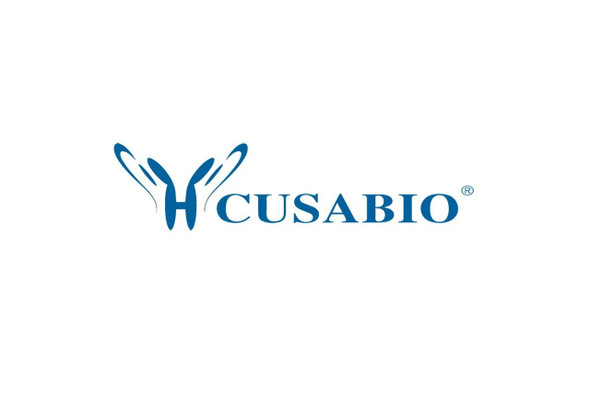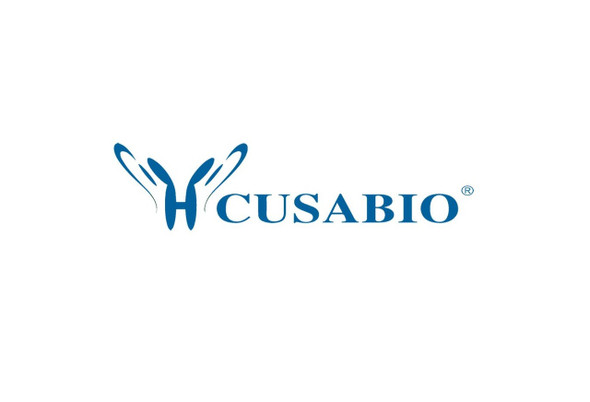Cusabio Sus scrofa Recombinants
Recombinant Pig Calcium-activated chloride channel regulator 1 (CLCA1), partial | CSB-EP886948PI
- SKU:
- CSB-EP886948PI
- Availability:
- 13 - 23 Working Days
Description
Recombinant Pig Calcium-activated chloride channel regulator 1 (CLCA1), partial | CSB-EP886948PI | Cusabio
Alternative Name(s): Calcium-activated chloride channel family member 1 pCLCA1 AECC
Gene Names: CLCA1
Research Areas: Signal Transduction
Organism: Sus scrofa (Pig)
AA Sequence: DERLIQNIKDMVTKASPYLFEATEKRFYFKNVAILIPASWKAKPEYVKPKLETYKNADVVVTEPNPPENDGPYTEQMGNCGEKGEKIYFTPDFVAGKKVLQYGPQGRVFVHEWAHLRWGVFNEYNNEQKFYLSNKKEQPVICSAAIRGTNVLPQ
Source: E.coli
Tag Info: N-terminal 10xHis-tagged and C-terminal Myc-tagged
Expression Region: 46-199aa
Sequence Info: Partial
MW: 22.8 kDa
Purity: Greater than 85% as determined by SDS-PAGE.
Relevance: May be involved in mediating calcium-activated chloride conductance. May play critical roles in goblet cell metaplasia, mucus hypersecretion, cystic fibrosis and AHR. May be involved in the regulation of mucus production and/or secretion by goblet cells. Involved in the regulation of tissue inflammation in the innate immune response. May play a role as a tumor suppressor. Induces MUC5AC. Induces a cAMP-dependent chloride conductance possibly through effects on CFTR in colon carcinoma cells.
Reference: "pCLCA1 lacks inherent chloride channel activity in an epithelial colon carcinoma cell line." Loewen M.E., Bekar L.K., Walz W., Forsyth G.W., Gabriel S.E. Am. J. Physiol. 287:G33-G41(2004)
Storage: The shelf life is related to many factors, storage state, buffer ingredients, storage temperature and the stability of the protein itself. Generally, the shelf life of liquid form is 6 months at -20?/-80?. The shelf life of lyophilized form is 12 months at -20?/-80?.
Notes: Repeated freezing and thawing is not recommended. Store working aliquots at 4? for up to one week.
Function: May be involved in mediating calcium-activated chloride conductance. May play critical roles in goblet cell metaplasia, mucus hypersecretion, cystic fibrosis and AHR. May be involved in the regulation of mucus production and/or secretion by goblet cells. Involved in the regulation of tissue inflammation in the innate immune response. May play a role as a tumor suppressor. Induces MUC5AC. Induces a cAMP-dependent chloride conductance possibly through effects on CFTR in colon carcinoma cells.
Involvement in disease:
Subcellular Location: Secreted, extracellular space
Protein Families: CLCR family
Tissue Specificity: Expressed in ileum, trachea, and the major salivary glands. In ileum, expressed to the crypt and villus epithelia, whereas in trachea expressed in both surface epithelium and submucosal glands.
Paythway:
Form: Liquid or Lyophilized powder
Buffer: If the delivery form is liquid, the default storage buffer is Tris/PBS-based buffer, 5%-50% glycerol. If the delivery form is lyophilized powder, the buffer before lyophilization is Tris/PBS-based buffer, 6% Trehalose, pH 8.0.
Reconstitution: We recommend that this vial be briefly centrifuged prior to opening to bring the contents to the bottom. Please reconstitute protein in deionized sterile water to a concentration of 0.1-1.0 mg/mL.We recommend to add 5-50% of glycerol (final concentration) and aliquot for long-term storage at -20?/-80?. Our default final concentration of glycerol is 50%. Customers could use it as reference.
Uniprot ID: Q9TUB5
HGNC Database Link: N/A
UniGene Database Link: UniGene
KEGG Database Link: KEGG
STRING Database Link: STRING
OMIM Database Link: N/A









